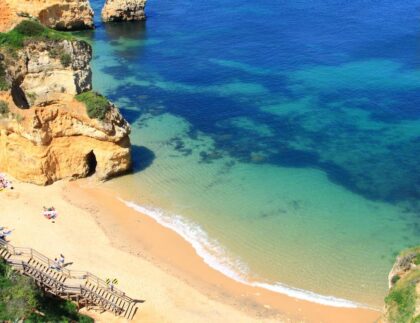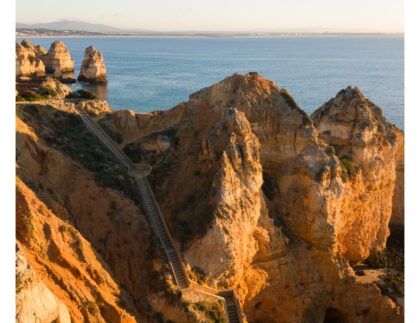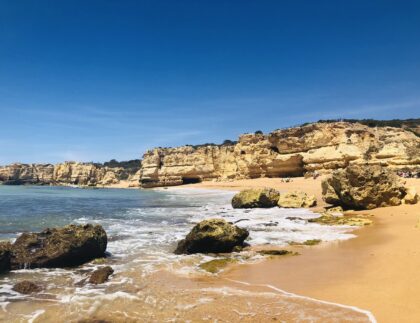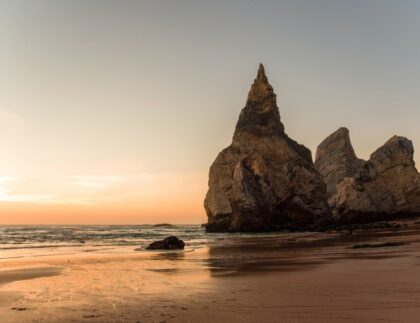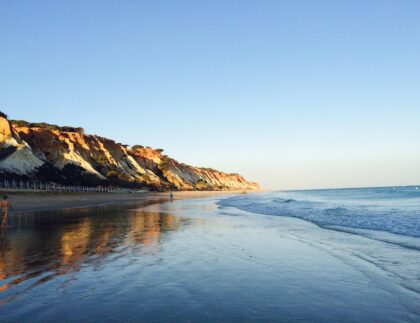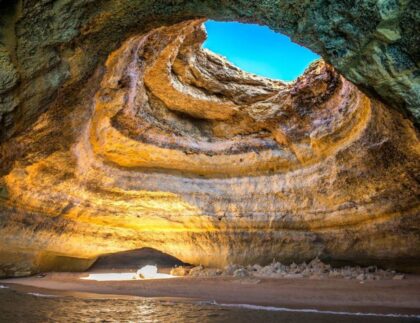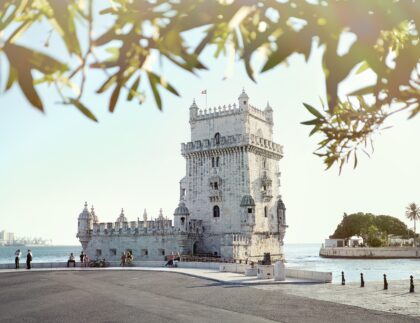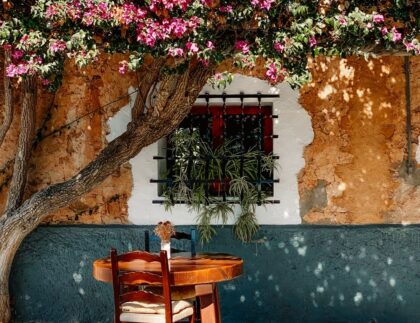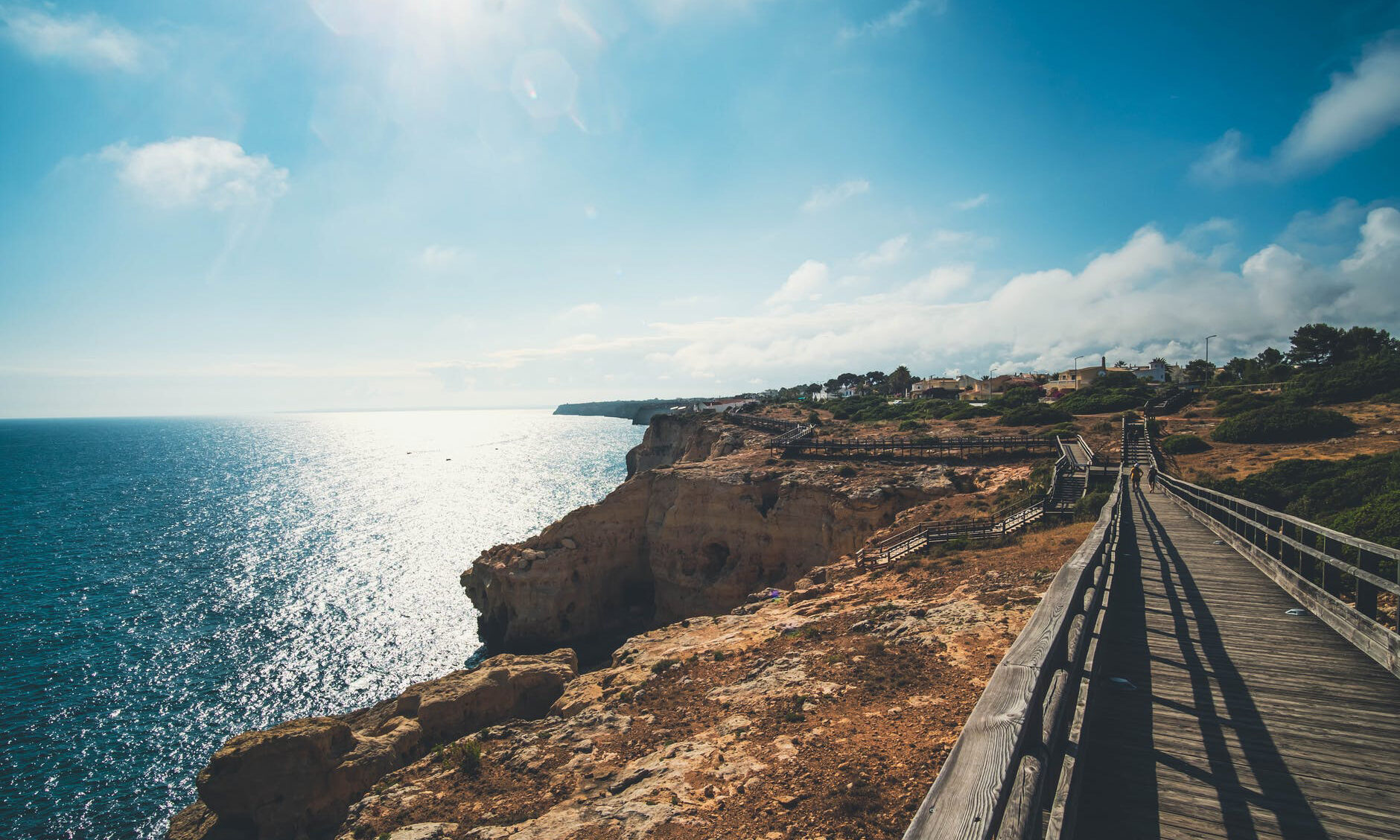
The Algarve region in Portugal is known for its rich culture, natural beauty, and fantastically warm climate that brings constant sunshine and clear blue skies to the area year-round.
The Algarve’s popularity as a tourist destination has increased rapidly over the last few years, likely to be due in some part to its year-round warmth and sunshine.
The Algarve is a popular tourist destination for visitors to Portugal, benefiting from the Mediterranean climate which brings long, warm and dry summers and very mild winters.
Temperatures rarely drop below 20°C and reach a peak of 28°C in July and August. September enjoys slightly cooler weather in Algarve with a daily average of 26°C.
Is the Algarve hot all year round?
The Algarve actually receives more sun each year than California!
The Algarve boasts a magnificent all year round climate, with over 3,000 hours sunshine a year and clear blue skies for most of the year! ... Despite being on the Atlantic coast, the Algarve has a Mediterranean-like climate with mild winters and long, hot summers.
Sea breezes help to keep the weather conditions comfortable, helping to make sure humidity levels don’t reach above 65°C in summer. Rain isn’t a concern between June and September with just 10mm of rainfall per month.
What is the hottest month in the Algarve?
July is the hottest month in Algarve with an average temperature of 23.5°C (74°F) and the coldest is January at 12°C (54°F) with the most daily sunshine hours at 12 in August. The wettest month is December with an average of 117.2mm of rain.
Sunny throughout the year
The Algarve weather is very sunny throughout the year with up to 13 hours of shimmering sunshine per day in the summer. There’s around 12 hours of sunlight in autumn, which is slightly less than the summer but still plenty of time to relax by the shore or do some shopping in a nearby town or city.
Temperatures in Algarve are between 13°C and 22°C in autumn, which is still mild and enjoyable. There’s around 55mm of rain per month with an average sea temperature of 19°C.
Winter weather is mild with highs of 15°C between December and February. It gets warmer in spring and temperatures often reach highs of 22°C in May. You’ll have around ten hours of sunlight per day with an average humidity ranging from 60% to 75%.
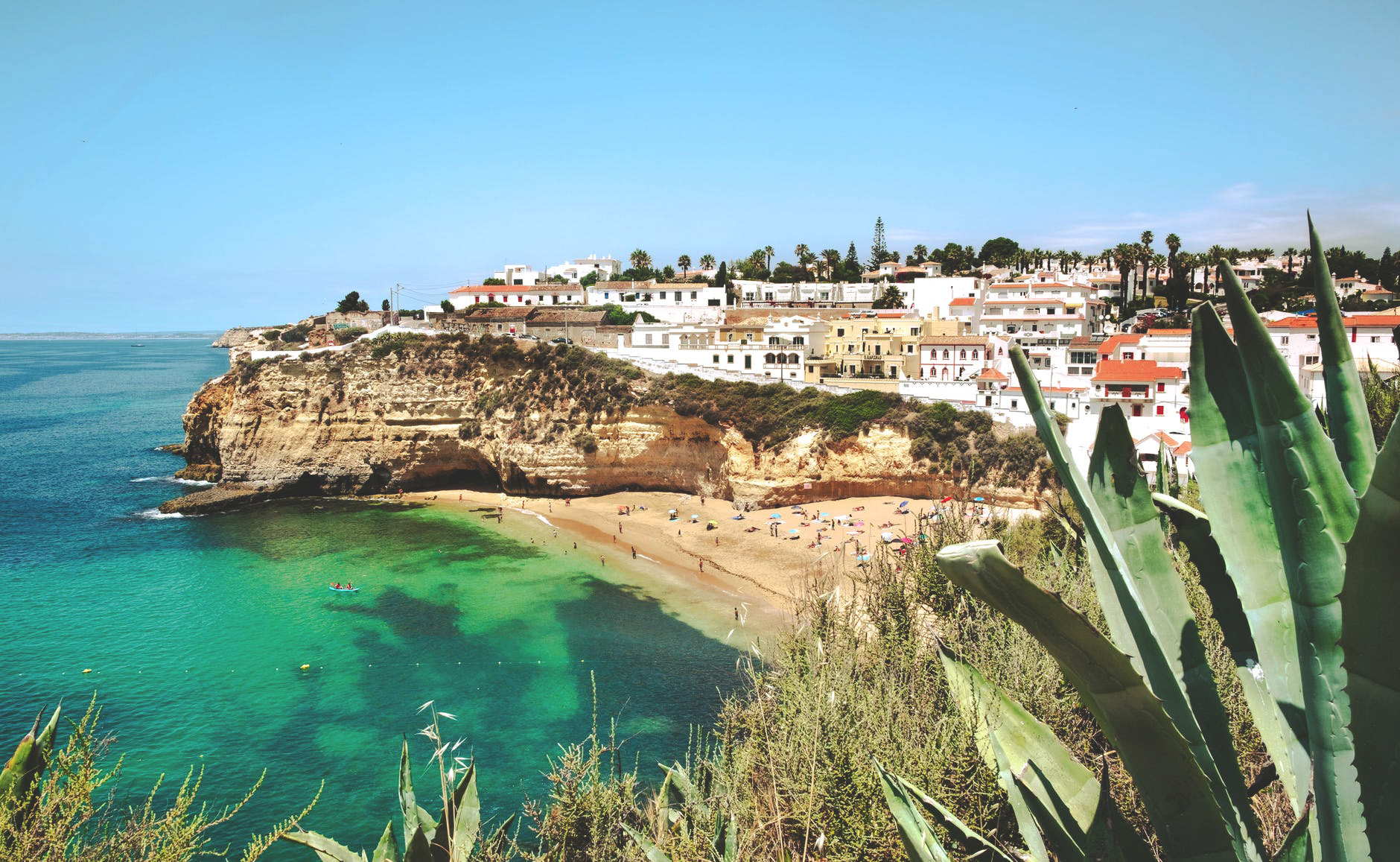
What is the typical climate like in the Algarve?
The Algarve has a Mediterranean climate (csa in the Köppen climate classification). This means that summers are warm and winters are mild. The average maximum temperature is 16 degrees Celsius (61 degrees Fahrenheit) in January/February and 29 degrees Celsius (84 degrees Fahrenheit) in July/August.
Read the Average High/Low Temperature for the Algarve in the below table to see which is the best weather month for your holiday vacation.
When is the best time to go to Algarve?
Algarve’s tourist fortunes may well be to do with its warm climate stretching through the entire year. Those seeking a comfortable break to explore Algarve, its food and culture in cooler conditions will certainly enjoy a visit during the early spring or late autumn months. Those looking to enjoy some time in the sun will want to head to Algarve in the summer months, taking advantage of the long, hot, summer days and nights.
Spring time warmth
Algarve’s spring season is warm, with temperatures averaging around 20 °C to 21 °C across the season. A quieter time of the year in Algarve, visitors to the area need not worry too much about the rainfall, but there are occasional showers. By the end of spring, the weather is more like summer with temperatures rising quickly, leaving visitors warm in the shade and hot in the sunlight. The days in the Algarve grow longer through the spring, with an average of eight hours of sunlight per day at the start of the season, rising to around 10 hours by the end of spring.
Summer hot and sultry
Tourists looking for sunshine will enjoy the Algarve summer. With almost no rainfall across June, July and August, the Algarve is dry through the summer months with the long days (peaking at 12 hours of sunlight in July) and near-zero cloud cover leaving a very warm climate. Temperatures can hit as high as 30°C in July, ranging upwards from the mid-20s. A gentle breeze may offer some relief from the heat, but wind speeds are relatively low so taking refuge in the shade at the height of the summer days might be advisable
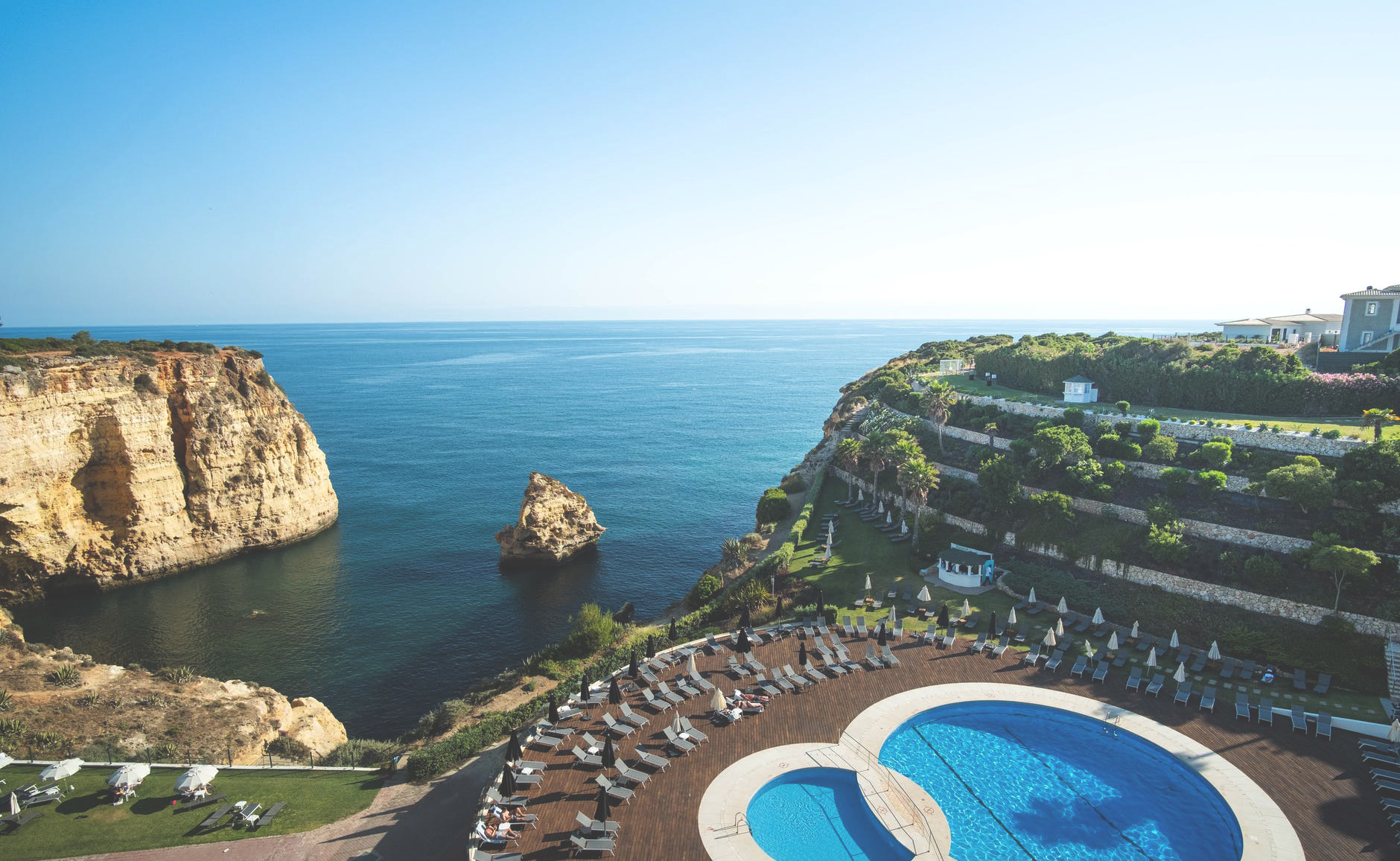
Autumn Indian Summers
The autumn in Algarve is typically hot to begin with, cooling only slightly too warm temperatures by November. Late-season sun seekers can still be found sunbathing throughout the autumn, enjoying average daily maximum temperatures ranging from 26°C in September to 19°C in November. Whilst it remains warm in Algarve, rainfall rapidly increases through the autumn season: 26mm in September, 56mm in October and 81mm in November. Despite the warmth of autumn, Algarve’s average sunshine falls to around 6 hours per day by the end of the season.
Winter warmer, hotter than the UK
December is winter’s wettest month in Algarve with 96mm of rainfall through the month, typically. Whilst the winter season is warm – expect the air to feel cool to mild, although you might find temperatures in the sunlight to be as high as 20°C – the days are much shorter, with 5 to 6 hours expected each month through the winter.text
Come to the Algarve, more sunshine than California
Not only does this beautiful region have more sunshine per year than California, but it is also a hub for tourists wanting to experience its fantastic food-related culture - the Algarve is renowned for the local seafood and fruit which are economically important to the growth of the region. It's not surprising that the Algarve is the most popular tourist destination in Portugal.
The Algarve's sunny shores date back thousands of years and have seen vast development since its 12th-century routes. The coast is now scattered with mountain ranges and terracotta rooftops; and while travelling around this beautiful region, tourists are greeted with an array of 15th-century architecture - the buildings are typically lavish with high ceilings and wide archways.
The region is bustling with some 10 million visitors per year and still manages to preserve its relaxed, homely feel - with visitors looking for more secluded stays in nearby Olhos de Água. This tranquil town has a mix of picturesque views and beautiful beaches and is still a relatively untouched part of the Algarve.

